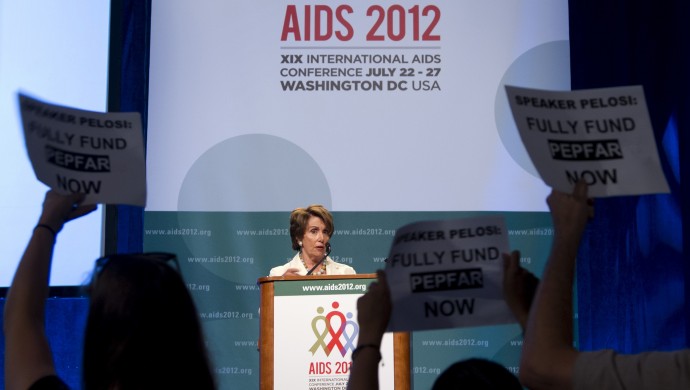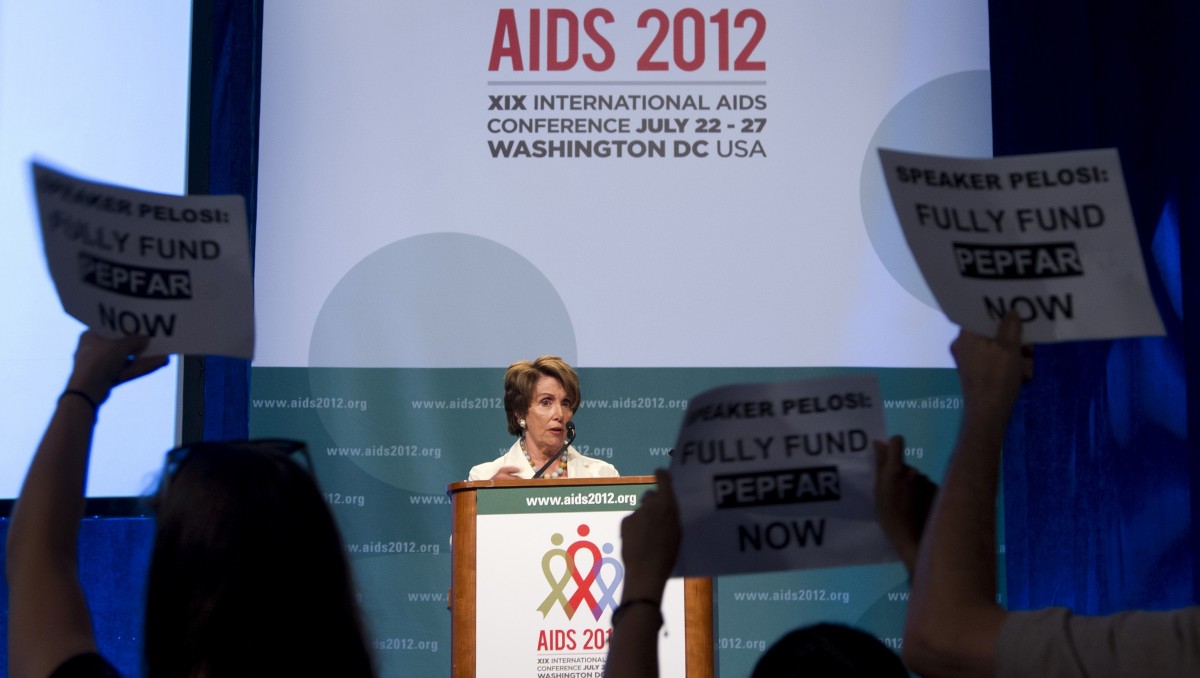
(NAMIBIA) MintPress — As the XIX International AIDS Conference ended in Washington D.C. on Friday, Namibians in southern Africa brainstormed ways to implement policies on the ground that would truly begin to “turn the tide” against HIV, carrying out the message of this year’s conference.
The Namibian Women’s Health Network held workshops in Windhoek, the country’s capital, last week to inform Namibians about what was happening at the international conference in D.C. “We held this workshop to connect the discussions in D.C. to our own issues in Namibia,” said Danai, an administrator with the organization.
Dozens of Namibians affected and/or infected by HIV attended the hub conference in Namibia, reviewing video clips from D.C. and discussing ways to implement change on the ground. Among the issues discussed were lack of education among parents as well as orphans and vulnerable children (OVC), ways of preventing mother-to-child transmission (PMTCT), drug defaulting, setbacks to condomization and ways to implement change.
While less than 200,000 people are known to be living with HIV in Namibia compared to 1.2 million people in the United States, the sparsely-populated country in Sub-Saharan Africa has one of the highest prevalence rates of HIV in the world—13.1 percent in 2009 compared to 0.6 percent in the United States.
Pandu Shangula, a student in Namibia, believes there is not enough discussion about HIV in schools or at home. “Everyone knows about HIV, but people cannot really talk openly about it,” says Shangula. “People talk openly at workshops, but it isn’t on the streets, in the townships and where it matters,” she said.
Hilde Jerobeam told MintPress that addressing HIV requires more campaigns for young Namibians. “We need campaigns for young people, run by young people. For me as a young person, I love entertainment; put me in a room with an old person lecturing about HIV and I’ll get bored.”
Shangula and Jerobeam are both members of the youth empowerment project Young Achievers, which is currently putting together a drama production about teen pregnancy and HIV that will be performed at several secondary schools in the city.
“What are we doing with the money?”
A major topic of the HIV debate both in Namibia and worldwide is about money; how much more money is needed to end the global pandemic? To date, the Global Fund has spent $22.9 billion to combat HIV. In 2013, the United States alone will spend $28.4 billion on treating and preventing HIV/AIDS.
South African Deputy President Kgalema Motlanthe believes that despite significant strides in the fight against HIV, more money is still needed to eradicate the problem. The Deputy President said in his speech at the international AIDS Conference, “This is not the time to reduce our contribution to the fight against HIV and AIDS.” Motlanthe reiterated this point later on, saying, “We urge the development partners, including foundations, philanthropists and investors, to maintain their investments in our efforts to turn the tide.”
Namibia, a country with a population of just over two million, received more than $432 million in HIV/AIDS funding from the President’s Emergency Plan for AIDS Relief (PEPFAR) between 2004 and 2009. This amount is separate from millions of aid dollars it has received from other international donors.
“What are we using the money for?” asks Danai, a coordinator of the Namibian hub conference. “Is it stopping HIV? We don’t need more money, we need to change our attitudes.”
Others attending the conference in Windhoek question, “How can the government focus on unemployment if all the money is going to HIV?” In a country with over 50 percent unemployment, HIV is seen by many as a disease that affects the whole society and believe it must be addressed that way.
Shangula told MintPress she believes there is enough AIDS funding entering Namibia, but the approach must change to make the allocation of that funding more effective. “The best approach is to do more campaigning,” she said. “HIV is fairly manageable, but stigma is the problem.”
Nelson Haulamba, a student of HIV management at the local International University of Management, told MintPress, “We must educate the nation to close the gap of ignorance. Stop separating queues for HIV and non-HIV patients.” Many HIV positive men and women complain about segregation and unfair treatment at hospitals. “If you are HIV positive, everyone knows,” said one man at the conference.
“Separation only fuels the stigma. People do not want to be labeled,” said Haulamba.
HIV-positive women fight for justice against forced sterilization
Women worldwide are particularly stigmatized based on their HIV status. Since 2008, 16 women have sued the Namibian government for breaches to their constitutional rights after being forcibly sterilized during childbirth.
More than forty cases of forced sterilization in public hospitals have emerged since 2007; many additional cases have likely gone undocumented. The majority of women who are sterilized are economically marginalised, illiterate and speak English as a second language.
In many cases, women went to the hospital to give birth and were coerced into signing away their rights without their knowledge. Some women were not even aware they were sterilized until months after the procedure.
“As an Owambo woman who doesn’t know the big words about sterilization, what would I do?” asks Jerobeam. “We need to put these papers in the mother tongues and start discussing sterilization options months before a woman is in the hospital giving birth..”
“The impact of involuntary sterilization can be devastating, affecting a woman’s mental and physical health and her relationship with her partner, her family and society at large,” says Jennifer Gatsi-Mallet, director of the Namibian Women’s Health Network, an organisation that has worked extensively with the women affected by these cases.
Gatsi-Mallet told the Namibian, “Such practices also have serious implications for the health care system as a whole,” she remarked. “Fear of discrimination and mistreatment can discourage women from seeking health care services and can undermine the government’s public health initiatives around HIV and reproductive health.”
On Monday, the Namibian court reached a verdict in favor of three cases, which were represented by the Legal Assistance Centre of Namibia. The Namibia High Court ruled that the government must pay monetary damages after forcing the women into agreeing to the procedure while they were in severe pain during labor.
When asked about the ongoing case, Danai, of the Namibian Women’s Health Network, told MintPress, “Justice has to be done. You feel like you’re not a woman anymore when someone cuts out your womb. You can prevent your child getting HIV. It is my choice. Tell me first.”
The Namibian Women’s Health Network has been particularly active in working toward ending forced sterilization. The network mobilized hundreds of supporters to appear in court and at several state hospitals on Monday to protest human rights violations against women living with HIV.
“These cases take time and we are finally getting a judgement,” said Danai. “We will not stop fighting forced sterilization and we will follow up on this case even after the judgement to make sure justice is carried out.”


